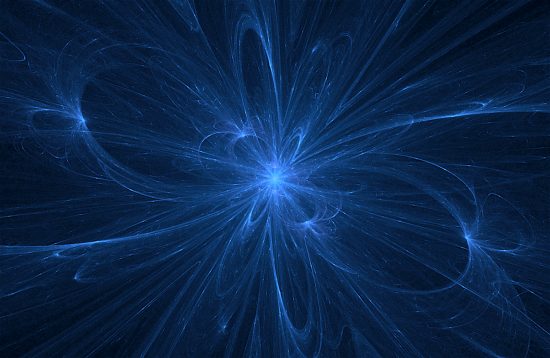Aug 19, 2016
Regions of space more than 500 million light-years in diameter are said to reveal dark energy influences.
“I have always believed that astrophysics should be the extrapolation of laboratory physics, that we must begin from the present Universe and work our way backward to progressively more remote and uncertain epochs.
— Hannes Alfvén
Scientists from Ludwig Maximilians Universität München (LMU) recently claimed to have found evidence for “dark energy”, a force that is supposed to cause an acceleration in the expansion of the Universe beyond that imparted by the Big Bang. Their research is based on an analysis of data from the Sloan Digital Sky Survey (SDSS).
According to Professor Jochen Weller: “By analyzing the cosmic voids, Nico Hamaus has succeeded for the first time in narrowing down cosmological models.”
Almost 20 years ago, astronomers found that observations of remote galaxies seemed to indicate the Universe is expanding faster today than it did in the past. So that Big Bang theory could accommodate the anomalous observations, the existence of a force that exerts negative pressure on gravitational fields was proposed. However, “negative gravity” was not a defensible concept, so they referred to the force as “dark energy” because, like dark matter, it cannot be detected with any instrument.
The implication is that one of two possibilities must be true. Either the Universe is filled with dark energy, which produces a repulsive force fighting the gravitational “brakes” caused by all matter, or, the current theory of gravity is incorrect. Modern astrophysicists chose the former.
In a previous Picture of the Day about the Cosmic Microwave Background radiation (CMB) data from the Very Large Array (VLA) radio telescope in New Mexico, it was noted that the discovery of “cosmic voids” in the structure of the Universe was based on an analysis of “low temperature” regions in space. As redshift measurements indicate, the voids can extend for half a billion light-years or more. It is these “supervoids” that lead LMU investigators to believe that they confirmed dark energy activity.
CMB data is thought to reveal a Universe that contains areas (superclusters) where increased density imparts gravitational energy to microwave emissions from deep space. Conversely, lower density regions (supervoids) weaken the received signals, because there is reduced gravitational mass available. Looking at the microwave frequencies from the VLA seems to show 500 million light-year-wide expanses where microwave radiation possessed a larger energy curve than it should exhibit.
Electric Universe physicists know that plasma makes up 99.99% of the Universe. It is a fascinating convergence that the volume of gravitational mass from dark matter and dark energy is the same as the mass of plasma that is overlooked.
From the perspective of the Electric Universe theory, electric currents drive the galaxies and their associated stars. Laboratory experiments demonstrate that Birkeland current filaments form structures that resemble spiral galaxies. Birkeland currents have a longer-range attractive force than gravity by several orders of magnitude, diminishing with the reciprocal of the distance from the current axis – which could account for the anomalous movement of stars as they revolve around the galactic core, as well as the anomalous acceleration of galaxies in deep space.
As physicist and Electric Universe advocate Wal Thornhill points-out: “It’s not that most of the matter and energy in the universe is dark, but that most cosmologists are totally in the dark about the real nature of the Universe.”
Stephen Smith













